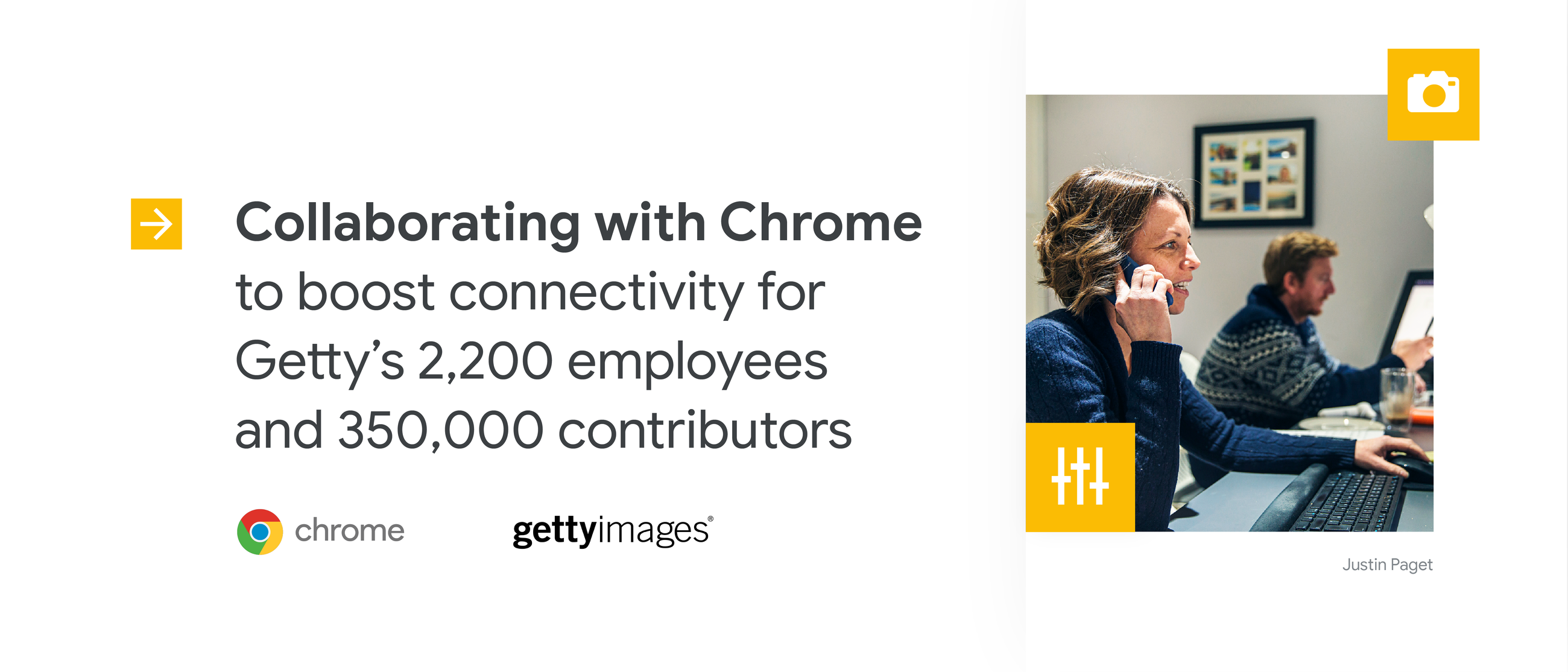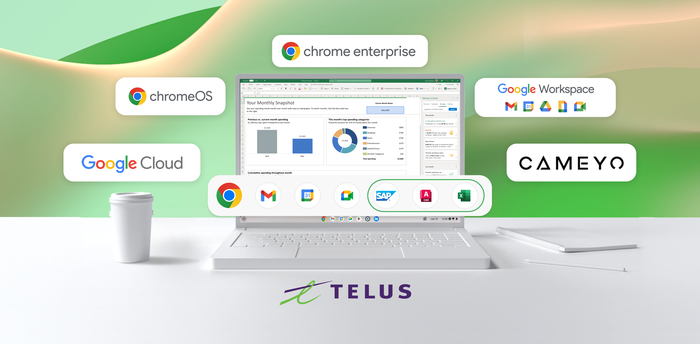Getty Images supports its workforce with Chrome Browser Cloud Management

John Bryntze
Principal Engineer, Getty Images
Learn more about Chrome Enterprise Core
Powerful and flexible management capabilities both in the cloud and on premises, at no additional cost.
Learn moreEditor’s note: Getty Images works with over 350,000 contributors and hundreds of image partners to provide comprehensive coverage of more than 160,000 news, sports, and entertainment events each year, impactful creative imagery to communicate any commercial concept, and the world’s deepest digital archive of historic photography. The company chose Chrome and Chrome Browser Cloud Management to support its workforce, and quickly and efficiently manage browser extensions, updates, and policy applications.
Getty Images offers the most exclusive and unique creative and editorial visual content globally, with over 425 million assets including award-winning imagery, video, music, multimedia, and premium digital content. You’ll find Getty Images photographers documenting tens of thousands of events around the world every year in order to share images and video with the news media, corporations, and through iStock to small businesses.
For events large and small, our photographers, as well as sales and admin teams, work hard to swiftly publish photos to our site so our customers can access them as quickly as possible. Our goal is to be the first and the best. To maintain our speed and agility, we’ve standardized on Chrome browser. Chrome ensures our around 2,200 worldwide employees have fast, reliable access to the web-based resources they rely on.
Remote work changes the game for browser management
In years past, Internet Explorer was our default browser because our CRM solution required it—although many employees chose to use Chrome as well. In 2016, when Getty Images switched to a modern CRM, the IT team and I decided Chrome would be our new default browser. We also standardized on Chrome for all new computers and laptops.
Chrome was easy to manage for our staff working in the Getty Images offices around the world, and for those who were traveling and connecting to the company network via VPN. In this model, our workstations were connecting into our domain, which enforced policies and deployed browser updates.
But in early 2020, when COVID-19 forced us to close offices and work remotely, we could no longer count on connections to our domain for management of our workstations. This meant we could no longer ensure employees, freelance photographers, and videographers were using the latest version of Chrome, policies were applied, or that browser extensions were approved.
Chrome Browser Cloud Management solved the security and browser update challenge. With it, we can greatly simplify the management of updates and application of policies to Chrome. This saves us time, and gives everyone peace of mind that no matter where they’re working, they’re doing so with a browser that is safe and up to date.
One of the most useful Chrome Browser Cloud Management tools is the ability to set and apply policies. We built organizational units (OUs) within the Admin console to logically group our systems for application of settings and policies. When updates or policy changes are needed, we first validate them, and then push them out to the OUs.
Being able to quickly roll out changes is a big win for us. Even if issues arise after we deploy a policy or update, it’s very easy to roll it back—unlike in our old model where remote workers had to connect to VPNs to fix issues, which could take hours or even days. Now, it takes little time to revert a value or setting across our enterprise.
Creating and distributing policies is also made easier by having one solution for multiple platforms. Today, we can use Chrome Browser Cloud Management to manage settings and policies for both Windows and macOS.
Better visibility into extensions and policies
Before we started using Chrome Browser Cloud Management, we had no way to block specific extensions, nor could we identify who was using them. Now, it’s easy. Recently, the security team told me they were concerned about possible malicious code in an extension. I could see some of our employees were using it, so I disabled it on those browsers using the Admin console and blocked it from being downloaded again.
Our employees use a mix of Windows, Mac, and Linux computers, so we used to have to download separate Chrome packages, validate them separately, then install the browsers in every device. Now that we can centrally manage updates, policies, and extensions much more easily, we save time that can be put toward other projects and business priorities.
Today, we do all browser updates with just one tool, the Admin console, which helps us manage and secure our systems more efficiently. That’s a time-saving benefit for those of us in IT, to be sure, but it’s also one that keeps the entire Getty Images family safer, no matter where the quest for the perfect image takes them. No matter who’s using Chrome—from sales teams looking for fast and reliable access to systems that help them serve our customers, to IT teams supporting and securing their distributed workforce—everyone wins.



